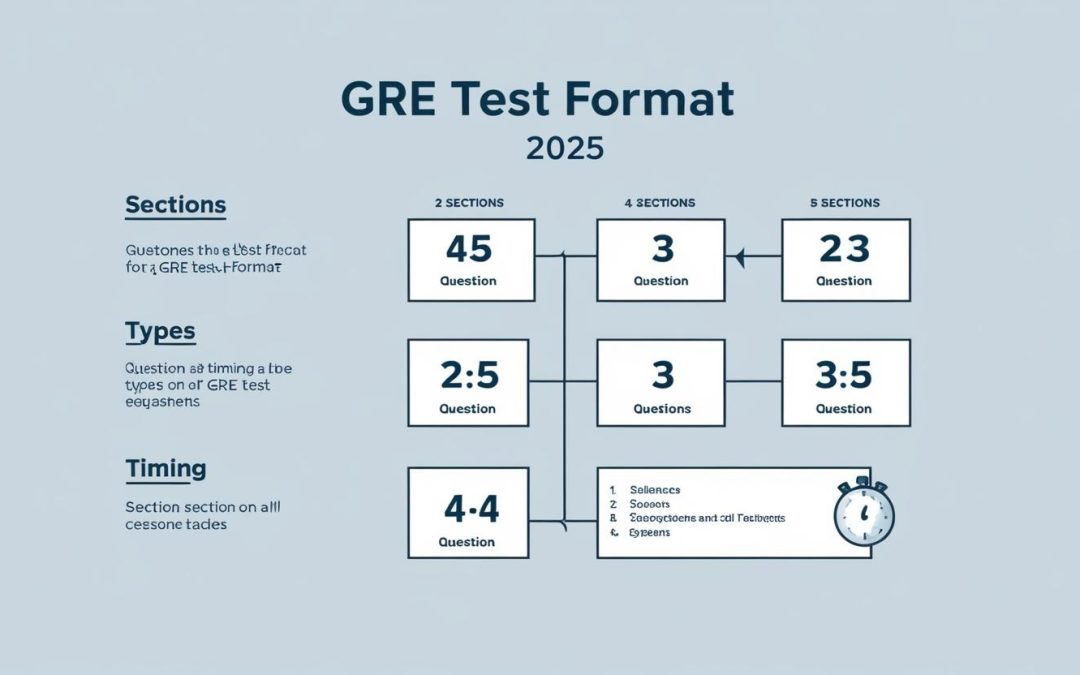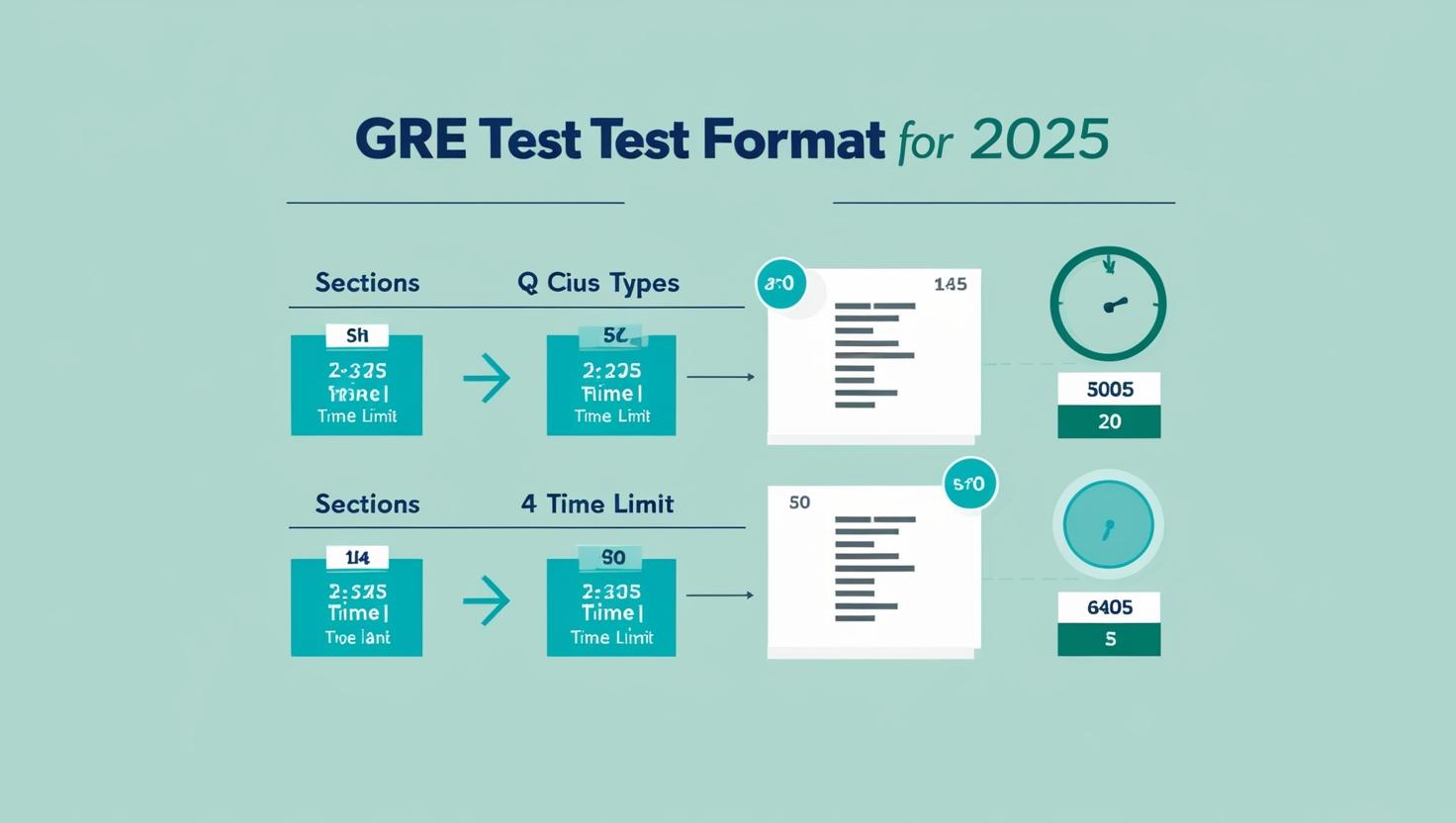Are you ready to take on the GRE in 2025? At TakeMyGREExam.com, we know that preparing for the Graduate Record Examination (GRE) can feel overwhelming, especially when you're unsure about what to expect on test day. But don't worry we’ve got your back! In this comprehensive guide, we’ll break down the GRE test format for 2025 in a way that’s easy to understand, so you can walk into the exam feeling confident and fully prepared.
The GRE Test Format for 2025: What’s Inside?
The GRE is divided into three main sections, each designed to test different skills essential for graduate school success. Here's a breakdown of what each section includes:
-
Verbal Reasoning
The Verbal Reasoning section assesses your ability to analyze and evaluate written material, understand relationships between words and concepts, and reason through language-based problems. It consists of two sections, each containing 20 questions. The main focus here is your ability to:-
Understand the meaning of words and sentences in context.
-
Make inferences and draw conclusions from written passages.
-
Identify relationships among concepts and ideas.
This section is 35 minutes long per section, for a total of 70 minutes.
-
-
Quantitative Reasoning
The Quantitative Reasoning section tests your ability to understand, interpret, and analyze quantitative information, as well as your problem-solving skills. It includes two sections, each containing 20 questions that cover topics like:-
Arithmetic
-
Algebra
-
Geometry
-
Data analysis
The math in this section isn’t advanced calculus, but you’ll need a solid grasp of basic mathematical concepts. This section also takes 35 minutes per section, adding up to 70 minutes total.
-
-
Analytical Writing
The Analytical Writing section evaluates your critical thinking and analytical writing skills. It includes two tasks:-
Issue Task: You’ll be asked to write an essay expressing your viewpoint on an issue.
-
Argument Task: You’ll analyze a given argument, discussing its reasoning and evaluating the evidence provided.
You’ll have a total of 60 minutes for the two tasks (30 minutes per task).
-
The GRE Test in 2025: Key Changes and Updates
While the basic structure of the GRE remains the same in 2025, there are a few important updates to be aware of:
-
Adaptive Testing: The GRE is now a “computer-adaptive” test. This means the difficulty of the questions adjusts based on your performance. The better you do, the harder the questions become, which helps to better measure your abilities.
-
No Penalty for Wrong Answers: The GRE no longer penalizes you for incorrect answers, so it’s always best to attempt every question, even if you’re unsure. This is great news for those who worry about guessing!
Preparing for the GRE: Tips and Strategies
Now that you know the GRE test format, let’s talk about how you can prepare effectively. Here are some tips to help you get ready for the big day:
-
Start Early: Begin your preparation at least 3 to 6 months before your test date. This will give you ample time to cover all sections of the GRE and practice your skills.
-
Take Practice Tests: The best way to familiarize yourself with the GRE format is by taking practice exams. This will help you get comfortable with the pacing and question styles. It also helps you identify areas where you may need improvement.
-
Focus on Weaknesses: If you struggle with certain topics, devote extra time to practicing those areas. For example, if you’re not confident with math, consider working through additional quantitative reasoning problems.
-
Use High-Quality Prep Materials: Invest in reliable GRE prep books, online resources, and courses. At TakeMyGREExam.com, we offer tons of study materials, including practice tests and tips for all sections of the exam.
-
Stay Calm on Test Day: On the day of the exam, make sure you get plenty of rest the night before and arrive at the test center early. A clear mind is your best asset for success.
Frequently Asked Questions (FAQs) About the GRE Test Format for 2025
1. How long is the GRE test? The GRE takes about 3 hours and 45 minutes to complete, including the research section and breaks.
2. Is the GRE really necessary for graduate school applications? Many graduate programs require the GRE as part of their admissions process, though some may waive it. Check with the specific schools or programs you’re applying to.
3. What is the scoring system for the GRE? The GRE uses a scoring scale of 130 to 170 for both the Verbal Reasoning and Quantitative Reasoning sections. The Analytical Writing section is scored separately on a scale of 0 to 6.
4. How many times can I take the GRE? You can take the GRE once every 21 days, and up to five times within a 12-month period. If you're not happy with your score, you can retake the test, but it’s best to give yourself time to study before attempting again.
5. What happens if I don't finish a section in time? Don’t panic. The GRE is designed with strict time limits, and if you run out of time, any unanswered questions will simply be marked as incorrect. The best strategy is to pace yourself throughout the exam and move on when you're stuck on a question.
6. Can I bring a calculator? You’re allowed to use an on-screen calculator for the Quantitative Reasoning section, but personal calculators aren’t permitted in the test center.
7. How soon will I get my GRE scores? You’ll receive your unofficial scores for the Verbal and Quantitative sections immediately after completing the test. Your official scores, including the Analytical Writing section, will be available within 10 to 15 days.
Final Thoughts: Start Your GRE Journey with Confidence
Now that you know everything about the GRE test format for 2025, it’s time to dive into your preparation. At TakeMyGREExam.com, we’re here to guide you every step of the way. Whether you're looking for study tips, practice tests, or expert advice, we’ve got the tools you need to succeed. Remember, the GRE is just one part of your graduate school application, and with the right preparation, you’ll be ready to tackle it head-on.


